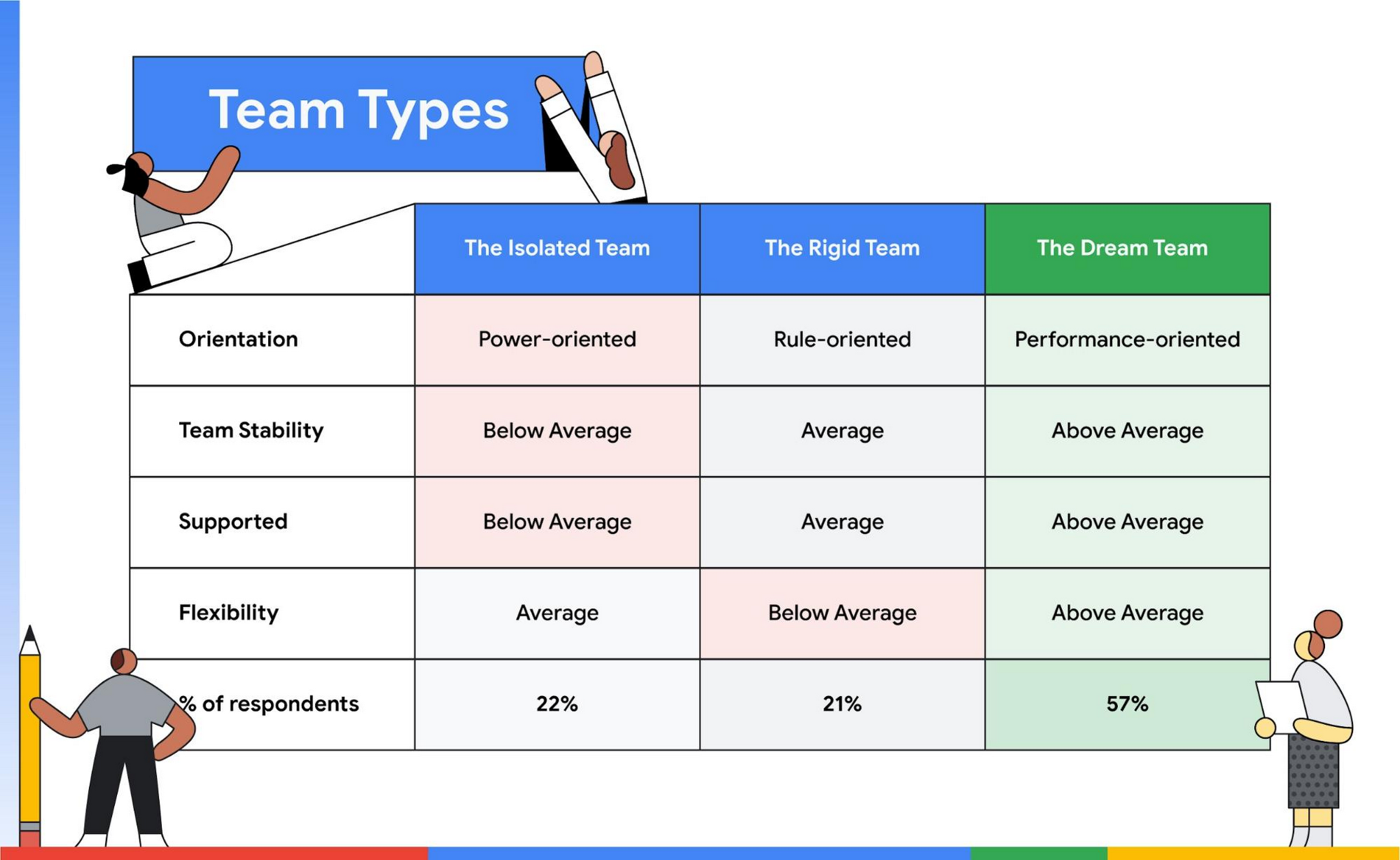2022 State of DevOps Report data deep dive: good team culture

Derek DeBellis
DORA Research Lead
Editor's note: Every year, Google Cloud's DevOps Research and Assessment (DORA) team seeks to gain a better understanding of the software delivery and organizational performance through the annual Accelerate State of DevOps reports. This series will take a deeper dive into the research and explore some interesting findings that we couldn’t fit into the 2022 State of DevOps report.
Culture is a pivotal driver of whether teams will thrive or fail under the increasing pressures of hybrid work. Given the continued importance of culture as we all transition to more flexible work models, the DORA team sought to better understand factors that drive organizational culture and their impact on team performance.
One thing that has been consistent year over year in the report is that the culture of an organization, or team, is the soil in which technology and process either thrive or wither, but it all depends on the nutrients an organization’s culture provides.
What makes good team culture?
An organization’s culture has a tremendous impact on outcomes vital to an organization's success. An important aspect of a good team culture is one that is performance-oriented. In performance-oriented organizations, information flows freely, teams are stable and have flexible work arrangements, and leaders support their teams by encouraging a practice of continuous improvement. We see these aspects of culture associated with higher organizational performance, lower burnout and more time to do meaningful work. Based on our 2022 report, we believe other central aspects of good culture include flexible work arrangements, team stability and support.
The goal of this blog is to describe and explore a taxonomy of culture based on the four dimensions above. There are a few questions we need to address to accomplish this goal:
What are the most common types of teams that emerge across these 4 aspects of culture?
How prevalent are each of these team types?
And do these teams get to different outcomes?
We will use cluster analysis to help answer these questions. Cluster analysis is a statistical analysis that looks across various aspects of interest (for example, size, color and shape of flowers) and tries to find the most common types of combinations, or clusters. Here, a cluster will highlight prevalent types of teams in our data.
In short, we found three clear types of teams that emerge when looking at Westrum’s organizational orientation, team stability, team stability, how much a team is supported and workplace flexibility. Let’s take a look at the three types of teams and learn if they lead to better or worse organizational outcomes based on the four vital outcomes: organizational performance, burnout, likelihood to recommend working on one’s team, software delivery performance and operational performance.


The dream team
“The dream team” (we came up with the names, not the data) has a performance-oriented culture, a stable team, leadership/management support, and offers employees flexible work arrangements. Without being too judgmental of the other clusters, on the surface, this team seems preferable to the other teams. This is good news because about 57% of our respondents’ teams fell into this category, which means one would have the highest likelihood of landing in a team like this should they be randomly assigned a team.
“The dream team” is a good comparison group because they seem to be thriving across the aspects of culture we were interested in. So, relative to the dream team, we will compare how the other teams perform across these outcomes.
The isolated team
22% of respondents' teams are best represented by “the isolated team”. This team provides employees some flexibility, but looks like a team where collaboration is low, mistakes are punished, making connections is discouraged, churn is high, and support is low. We call this “the isolated team” because both the team is isolated from company-wide initiatives, as evidenced by the low support, and the members of the team are likely somewhat isolated from each other.
The isolated team is estimated to have 2.4x higher levels of burnout than the dream team. At the same time, the isolated team has 2.3x lower levels of organizational performance and 4.3x lower software delivery performance than the dream team.
The rigid team
Finally, we have the third cluster, or “the rigid team” - not simply because they lack workplace flexibility but because this team seems to lack the cultural infrastructure to encourage development. 21% of respondents' teams are best represented by this cluster.
Forming connections and collaborating are tolerated, but not actively encouraged. Novel ideas can lead to more problems than they solve because the team lacks the malleability necessary to grow.
The rigid team is estimated to have 1.2x higher levels of burnout and 2.6x lower levels of organizational performance than the dream team
Software delivery performance and operational performance take a significant hit in the rigid team. People on the rigid team are estimated to have 1.2x lower operational performance and 3.5x worse software delivery performance than the dream team.
Conclusion
The dream team is not only a better place to work, but a better place to get things done. Plus folks on the dream team report that they are nearly 200% more likely to recommend working on their team, which is vital as we are all trying to reduce turnover.
Most of our survey respondents work in technical roles but it's not difficult to see how these cultures might also appear in other areas of an organization like sales, marketing, or even finance!
To learn more about great culture and other factors that can affect your software delivery performance by downloading the 2022 State of DevOps Report. And join our DORA.community group for more discussions on all things DORA, devops and software delivery performance.


